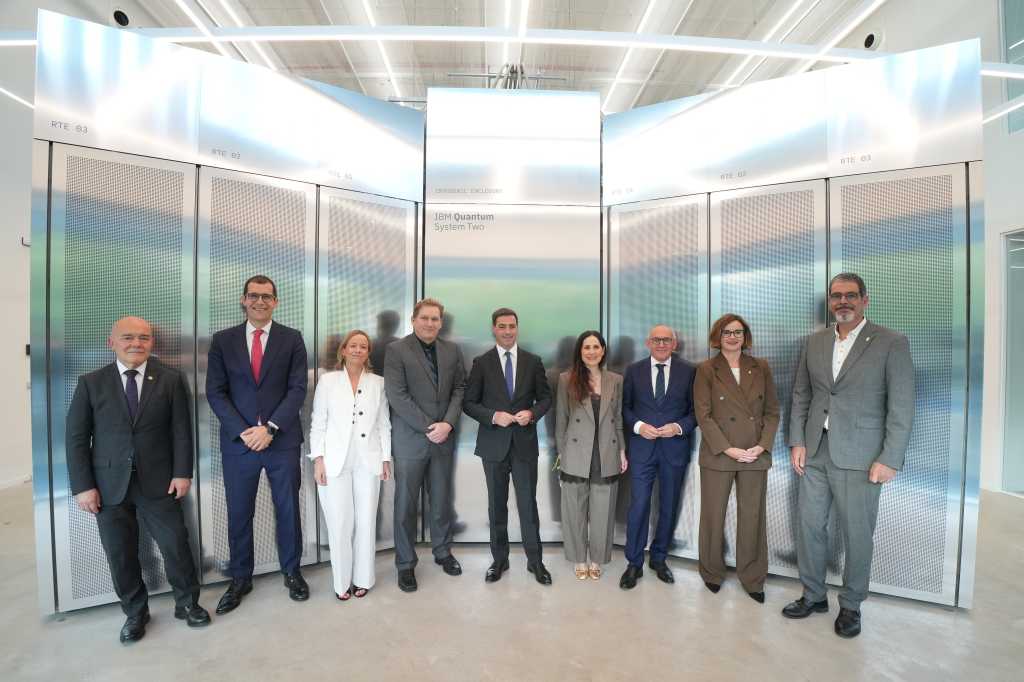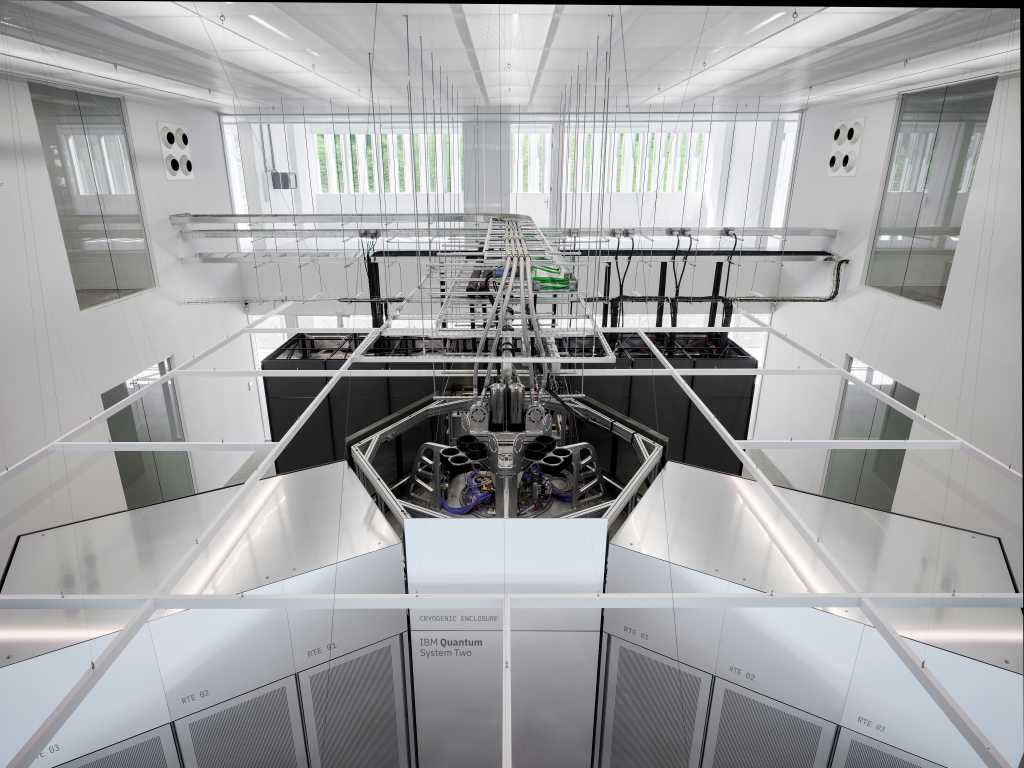
IBM executives and officials from the Basque Government and regional councils in front of Europe’s first IBM Quantum System Two, located at the IBM-Euskadi Quantum Computational Center in San Sebastián, Spain.
Irekia
Adolfo Morais, Deputy Minister of Science and Innovation of the Basque Government, explained to the press present at the event that the use of the new quantum machine in combination with other classical supercomputing systems, which will be modernized shortly, and artificial intelligence solutions will surely be a reality in 2027. “At the Euskadi Quantum Computational Center of Ikerbasque, we are already thinking about setting up a more modern supercomputer to replace the current Hyperion next year, so that in two years we will be able to use the three types of technology in combination.”
“We don’t envision quantum computing working independently, just as we don’t envision classical computing working independently in the future,” emphasized Mikel Díez, director of Quantum Computing at IBM Spain, confirming that the new computer works in conjunction with classical computing architecture. “The purpose of our quantum computing proposal is for it to work in conjunction with classical computing,” he emphasized.
The machine, he explained, is a modular architecture that, for now, has a single quantum chip, but more can be added. It takes up almost an entire room and must be kept at a temperature of -273 degrees Celsius, guaranteed by a pump cooling system. “It consumes kilowatts, not megawatts, because the qubits barely require any energy; in this sense, it’s very different from large classical supercomputers, which require much more energy,” Díez added.
Practical applications of an emerging technology
Quantum computing, combined with classical supercomputing and increasingly powerful AI tools, is expected to disrupt not only the academic world but also various productive sectors. As Mikel Díaz himself recalls in an interview with Computerworld, the Basque Government’s BasQ program contemplates three types of initiatives or projects that will work with quantum technology. “The first are related to the evolution of quantum technology itself: how to continue improving error correction, how to identify components of quantum computers, and how to optimize both these and the performance of these devices.”
In this sense, as Díez himself acknowledges to this newspaper, “it’s true that the computer we’re inaugurating today in San Sebastián is a ‘noisy’ computer, and this, in some ways, still limits certain features.” Specifically, according to the IBM executive, the Quantum System Two has a rate of one error per thousand operations performed with a qubit. “Although it’s a very, very small rate, we’re aware that it can lead to situations where the result isn’t entirely guaranteed. What are we doing at this current moment? Post-processing the results we obtain and correcting possible errors.” Díez emphasizes that this will be done for the duration of this transition period until the arrival of a fault-tolerant quantum machine, as classical computers have been for years.
Another type of project to which quantum computing will be applied, from a more scientific perspective, is the behavior of materials or time crystals. Finally, he explains, there is a third line related to the application of this technology in industry. “For example, we are exploring how to improve investment portfolios for the banking sector, optimize the energy grid, or explore logistics problems.”


